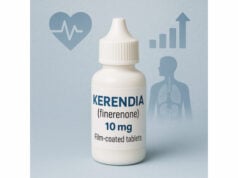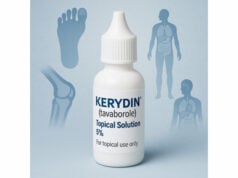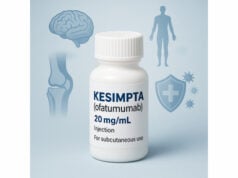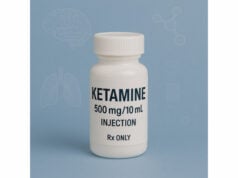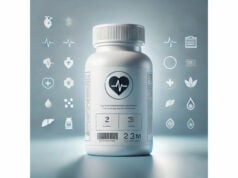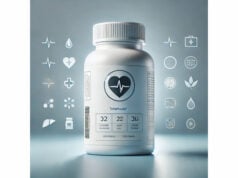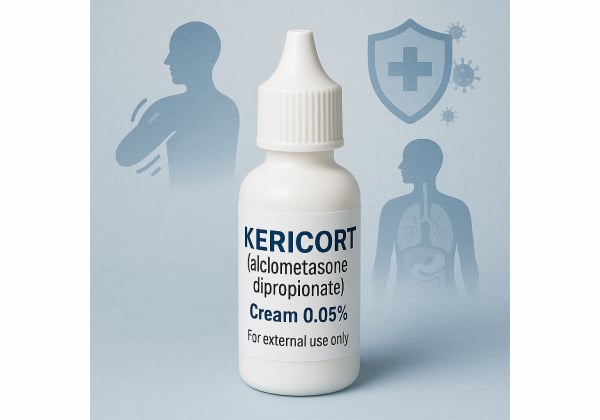
Kericort is a brand of over-the-counter 1% hydrocortisone cream formulated to calm itchy, inflamed skin. As a low-potency topical corticosteroid, it can be a practical first step for short-term relief from eczema flares, contact dermatitis, insect bites, and rashes from plants or cosmetics. Hydrocortisone eases redness, swelling, and itch by dialing down inflammatory signals in the skin and tightening superficial blood vessels. Because it is the mildest steroid class, Kericort is often suitable for adults and children over two years old when used as directed. Still, it is a medicine, not a moisturizer. Safe use means applying a thin layer for a limited time—usually up to seven days for self-care—while avoiding delicate or infected areas unless a clinician advises otherwise. This guide explains exactly what Kericort can and cannot do, how to apply it for best results, who should steer clear, and how to spot problems early. You will also find a concise dosing guide, troubleshooting tips, and an evidence summary grounded in current labeling and clinical practice.
Quick Overview
- Relieves itching and redness in steroid-responsive rashes (eczema, dermatitis, bites, poison ivy) when used for up to 7 days.
- Apply a thin layer 1–3 times daily; do not exceed 3–4 times per day without medical advice.
- Limit use on the face, groin, or armpits; avoid broken skin and untreated infections.
- Typical self-care course: adults and children ≥2 years; not for infants unless directed by a clinician.
Table of Contents
- What is Kericort and how it works
- Which skin problems it actually helps
- How to use Kericort, step by step
- Dosing: how much and how long
- Risks, side effects, and who should avoid
- Evidence, FAQs, and when to see a doctor
What is Kericort and how it works
Kericort is an over-the-counter cream containing hydrocortisone 1%, a low-potency topical corticosteroid. In plain terms, it is a mild anti-inflammatory medicine designed for short-term relief of itchy, irritated skin. Hydrocortisone mimics cortisol, a hormone your body produces naturally. When applied as a thin film on the skin, it binds to glucocorticoid receptors in skin cells and turns down genes that drive inflammation (such as those for cytokines and enzymes that produce inflammatory mediators). The result: less redness, swelling, warmth, and itch.
Two practical properties explain why Kericort can feel so calming so quickly:
- Anti-inflammatory action: It reduces immune activity in the upper layers of the skin, shrinking the inflammatory “traffic jam” that makes rashes angry and itchy.
- Vasoconstriction: It tightens small skin blood vessels in treated areas, which visibly decreases redness.
Kericort is classified as low potency among topical steroids, making it a common first-line choice for mild eczema and contact dermatitis and a safer option—when used properly—for thin-skinned areas compared with mid- or high-potency steroids. Even so, “low potency” does not mean “risk-free.” Overuse, use on the wrong areas, or use under occlusion (covered with airtight dressings) can increase absorption and raise the chance of side effects.
Because it is a medicine, Kericort should be used for self-care courses only—typically up to seven consecutive days—unless a healthcare professional instructs otherwise. If symptoms persist or return quickly, that is a signal to check the diagnosis, rule out infection or irritants, and consider a tailored treatment plan.
Key distinctions to remember:
- Kericort vs. moisturizers: Moisturizers rebuild the skin barrier but do not switch off inflammation. Kericort treats inflammation; pairing it with a bland moisturizer makes both work better.
- Kericort vs. stronger steroids: Stronger steroids work faster for severe flares but carry higher risk. Kericort fits mild, localized problems where a cautious approach is appropriate.
- Kericort and infections: Steroids can mask infections. Do not use on oozing, crusted, or suspicious lesions unless infection is being treated.
Which skin problems it actually helps
Kericort is intended for steroid-responsive conditions—rashes driven by inflammation that predictably improve when inflammatory pathways are suppressed. Common examples include:
- Atopic dermatitis (eczema) flares: Useful for mild, localized patches on the body. Expect less itch within 1–2 days and steadier improvement over 3–7 days when combined with regular moisturizers.
- Allergic contact dermatitis: For reactions to plants (poison ivy, oak, or sumac), fragrances, nickel jewelry, or cosmetics, hydrocortisone eases itch and swelling once the trigger is removed.
- Irritant contact dermatitis: Hand rashes from soaps/detergents or excessive wet work can calm with short courses while barrier care is optimized.
- Seborrheic dermatitis: Red, flaky plaques around the nose, brows, and hairline sometimes respond to brief hydrocortisone use alongside antifungal shampoos or creams.
- Insect bites and stings: Reduces itch and swelling from mosquito and other insect bites.
- Psoriasis (limited): For small, thin plaques in sensitive locations, a short course may reduce redness and scaling; ongoing management generally requires clinician guidance.
Equally important are conditions Kericort is not suited for without medical supervision:
- Infections: Impetigo (bacterial), ringworm and athlete’s foot (fungal), cold sores and shingles (viral), and scabies may worsen or be masked by steroids. If a rash burns, oozes, forms pus, has ring-shaped edges, or shows clustered blisters, stop self-treatment and seek care.
- Acne, rosacea, and perioral dermatitis: Steroids can aggravate these and cause steroid-induced dermatitis, particularly on the face.
- Chronic thick plaques or widespread disease: Stronger agents or different diagnoses may apply.
- Wounds and ulcers: Do not apply to open skin unless a clinician instructs you.
Practical matching tips:
- Eczema on hands or body: Pair Kericort with frequent bland moisturizers; avoid frequent handwashing with hot water; consider cotton gloves at night after moisturizing (not occlusion of the steroid).
- Poison ivy: Wash the area promptly with soap and cool water, remove contaminated clothing, then apply a thin layer of Kericort 2–3 times daily for several days. Severe or facial involvement needs medical care.
- Seborrheic dermatitis: Use anti-yeast shampoo (e.g., pyrithione zinc or ketoconazole) for the scalp; reserve Kericort for brief use on inflamed facial patches.
If a rash does not clearly improve after a few days—or if it worsens—re-evaluate. A lack of response may mean the condition is not steroid-responsive, an infection is present, or the trigger persists (for example, ongoing exposure to a metal allergy).
How to use Kericort, step by step
1) Prep the skin
- Wash hands.
- Clean the affected skin with lukewarm water and a gentle, fragrance-free cleanser; pat dry.
- For plant resin exposure (poison ivy/oak/sumac), promptly wash with soap and cool water to remove urushiol.
2) Apply a thin layer
- Squeeze a small amount and spread a thin, shiny film over the rash—do not glob it on.
- Use the fingertip unit guide: the amount squeezed from the last finger crease to the fingertip covers about two adult handprints of skin. For a small patch (e.g., a coin-sized area), you need far less.
3) Frequency
- Start 1–2 times daily for most rashes. You may use up to 3–4 times daily short-term if directions on the label allow and a clinician has no concerns.
- For the anal or external genital area, follow label directions precisely (typically after cleansing and drying) and avoid prolonged use.
4) Pair with moisturizers
- Apply a bland, fragrance-free moisturizer after Kericort has absorbed (or apply moisturizer first, then Kericort on “hot spots” if advised by your clinician). Consistent moisture repair reduces steroid needs over time.
5) Avoid high-risk practices
- Do not cover with airtight dressings unless directed; occlusion greatly increases absorption and side-effect risk.
- Avoid eyes, inside the nose, and inside the mouth.
- Use caution on thin skin (face, eyelids, neck, armpits, groin). If needed there, keep courses brief and minimal.
6) Duration
- Self-care courses are typically up to 7 days. If symptoms persist or return quickly, seek medical advice rather than extending use indefinitely.
7) Special cases
- Children ≥2 years: Use sparingly, not more than directed, and avoid large areas.
- Diaper area: Do not use for diaper rash unless a clinician instructs you. The diaper functions like an occlusive dressing and increases absorption.
- Anal itching: Cleanse with mild soap and water, pat dry, apply a thin layer; stop and seek care if bleeding occurs or symptoms persist more than a few days.
8) Storage and handling
- Store at room temperature, capped tightly, and out of children’s reach.
- Do not share the tube; rashes can have different causes even if they look similar.
Dosing: how much and how long
Kericort (hydrocortisone 1%) dosing is straightforward, but precision matters to keep it effective and safe.
Standard adult dosing
- Amount: A thin film over the affected area; typically 0.25–0.5 fingertip units for a small patch (coin- to palm-size).
- Frequency: 1–2 times daily in most cases; do not exceed 3–4 times daily without specific instructions.
- Duration: Up to 7 days of self-care for minor rashes. If not better, stop and seek evaluation.
Children
- Age: Over-the-counter labeling generally supports use in children ≥2 years for short courses.
- Amount and frequency: As above, but use the smallest effective amount.
- Infants and toddlers <2 years: Consult a clinician before use.
Anal or external genital itching
- Follow the label’s dedicated directions: cleanse gently with mild soap and warm water, rinse and pat dry before each application. Use the smallest amount possible and do not exceed labeled frequency. Stop and consult a clinician if bleeding occurs or if symptoms persist.
Sensitive areas (face, folds, groin)
- Use only if advised for the specific diagnosis, apply the thinnest possible film, and keep courses very brief (often just a few days). Consider non-steroidal alternatives when feasible.
When to taper vs. stop
- For short, mild flares, you can usually stop abruptly when clear.
- If you used multiple daily applications for a week on larger areas, consider stepping down to once daily for a day or two, then stop, especially on sensitive sites, to reduce rebound.
Combining with other products
- Moisturizers: Essential partners. Apply at least twice daily and after bathing.
- Anti-fungals/antibiotics: Use only when prescribed for proven infections; sequence as directed.
- Other steroids: Do not layer or alternate with stronger steroids without guidance.
Maximum body surface area for self-care
- Keep applications localized. Treating very large areas increases the chance of systemic absorption and side effects; seek medical advice for widespread rashes.
Signs dosing needs a rethink
- No improvement after 3–7 days, recurring flares in the same spot, spreading rash, or new symptoms (pain, pus, fever) all warrant clinician review and possibly a different diagnosis.
Risks, side effects, and who should avoid
Used properly, Kericort is generally well tolerated. Side effects are more likely with frequent applications, long courses, occlusion, use on thin skin, or use over large areas.
Common, usually mild
- Temporary stinging, burning, or dryness right after application
- Mild skin irritation or redness at the application site
Less common
- Skin thinning (atrophy), easy bruising, visible small blood vessels (telangiectasias) with prolonged or excessive use
- Stretch marks (striae), particularly in skin folds with repeated courses
- Perioral dermatitis or acneiform eruptions, especially on the face
- Contact allergy to a component (red, itchy, worsening rash)
Rare but important
- Worsening or masking of infections (fungal, bacterial, or viral)
- Systemic absorption causing adrenal suppression is unlikely with brief, localized 1% hydrocortisone but can occur if misused (large areas, occlusion, very thin skin, or long durations)
Do not use for self-care if
- You suspect infection (pus, honey-colored crusts, ring-shaped scaling, grouped blisters, fever)
- You have severe acne, rosacea, or perioral dermatitis on the area you plan to treat
- You have poorly healing wounds or ulcers in the area
- The patient is under 2 years old (unless a clinician directs use)
Use only with medical guidance if
- You are pregnant or breastfeeding and need treatment on large or sensitive areas
- You have diabetes, circulatory problems, or disorders that impair skin integrity
- You require treatment on face, eyelids, groin, or armpits
- You plan to treat large areas or need repeated courses
Drug and product interactions
- Over-the-counter hydrocortisone has minimal systemic interaction risk when used correctly. The major “interactions” are really product combinations that change absorption (e.g., petrolatum occlusion) or duplicate therapy with other steroids. Avoid stacking multiple steroid products unless advised.
When to stop immediately
- No improvement after a week of correct use
- Worsening, spread, or new symptoms (pain, weeping, fever)
- Bleeding with anal application
- Signs of allergy (sudden swelling, hives, or widespread redness)
Bottom line: Kericort is safe when you stick to thin layers, small areas, short durations, and clear diagnoses. The risks rise when those guardrails are ignored.
Evidence, FAQs, and when to see a doctor
What evidence supports Kericort’s uses?
Hydrocortisone 1% is included in modern over-the-counter drug monograph labeling for the temporary relief of itching and inflammation from eczema, dermatitis, insect bites, poison ivy/oak/sumac, soaps/detergents, cosmetics, jewelry, seborrheic dermatitis, and psoriasis, as well as for short-term external anal or genital itching. Official labeling emphasizes external use only, limited frequency, and short duration. Safety language highlights the risks of occlusion, use on infected or broken skin, and prolonged courses.
How quickly should I expect relief?
Many people feel less itch within hours, with visible redness reduction in 1–2 days. If you do not see a clear trend toward improvement by day 3–4, recheck the diagnosis and triggers (nickel jewelry, fragrance exposure, new detergents) or consult a clinician.
Can I use Kericort on the face?
Caution is essential. The face is thin and more prone to side effects like skin thinning and steroid-induced dermatitis. If a clinician approves its use for a short course, apply very sparingly and avoid eyelids unless specifically instructed.
Is it safe during pregnancy or breastfeeding?
Short, localized use of low-potency hydrocortisone is generally considered low risk, but it’s wise to confirm with your clinician—especially for large areas, sensitive sites, or repeated courses. Avoid application on or near the nipple area if breastfeeding.
What about children?
For children ≥2 years, Kericort may be used short-term and sparingly on small areas. Prioritize moisturizers and trigger control. For infants and toddlers, seek clinician guidance.
Why pair Kericort with moisturizers?
Moisturizers repair the skin barrier, reduce water loss, and lower steroid requirements. Apply moisturizers twice daily and immediately after bathing. Many relapsing rashes need consistent barrier care even after steroid courses end.
Can I prevent rebound after stopping?
For most minor flares treated briefly, simply stop when clear. If you used frequent applications on a larger area, taper to once daily for a day or two before stopping, then continue moisturizers and trigger avoidance.
When should I see a doctor instead of self-treating?
- No improvement after 7 days or rapid recurrence
- Face, eyelids, groin, or armpit involvement that needs more than a day or two
- Widespread rashes or rashes in infants
- Signs of infection (pain, heat, pus, fever, spreading redness)
- Uncertain diagnosis, especially when a rash has a unique pattern (ring shapes, grouped blisters, target lesions)
Are stronger steroids better?
Potency must match the problem and the body site. Stronger steroids bring faster relief but higher risks, particularly on thin skin. For mild, localized issues, a low-potency steroid like Kericort is often the safer starting point.
Is Kericort a cure?
No. It treats symptoms by suppressing inflammation. Preventing flares means identifying triggers, repairing the barrier with moisturizers, and using targeted therapies when needed.
References
- HYDROCORTISONE- hydrocortisone 1% cream 2024
- HYDROCORTISONE CREAM 1% cream 2024
- Over-the-Counter Monograph M017: External Analgesic Drug Products for OTC Human Use 2023 (Guideline)
- Hydrocortisone Topical: MedlinePlus Drug Information 2018
- Hydrocortisone (Topical) Monograph for Professionals 2024
Disclaimer
This guide is for educational purposes only and is not a substitute for personalized medical advice, diagnosis, or treatment. Always follow the directions on the product label and the advice of your healthcare professional. If symptoms persist, worsen, or suggest infection, stop self-treatment and seek medical care promptly.
If you found this article helpful, consider sharing it on Facebook, X (formerly Twitter), or your preferred platform, and follow us for more practical, evidence-based guides. Your support helps us continue creating high-quality resources.

